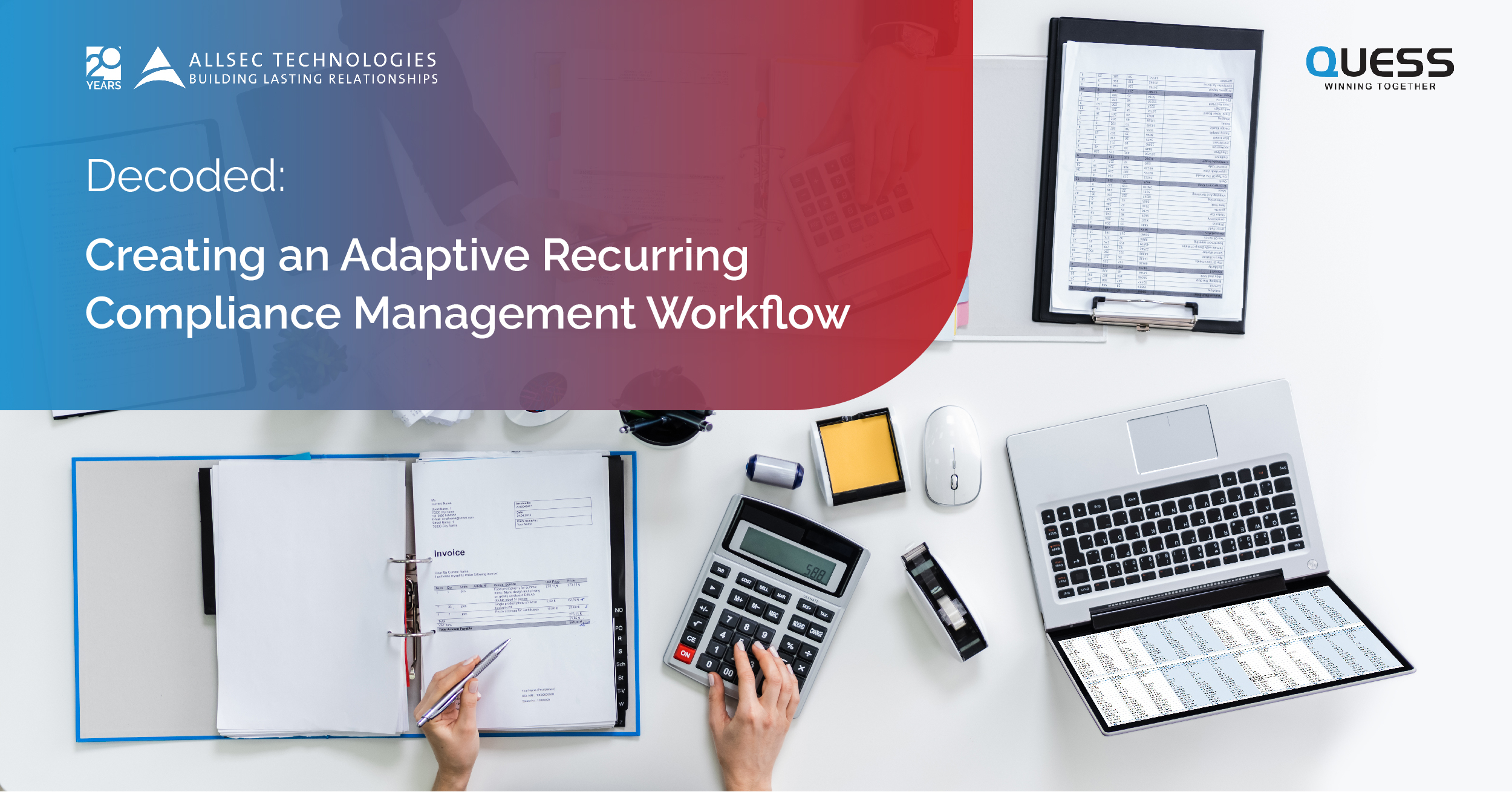
Decoded: Creating an Adaptive Recurring Compliance Management Workflow
The pandemic expedited workforce transformation and created a people-first paradigm that the world was slowly moving away from. The new normal focuses on employee well-being, remote productivity, kinder employment law, and automating routine tasks. For HR leaders, this means reevaluating legacy operational practices, and for those in the compliance department, recurring compliance management needs to be the top priority.
Defining Recurring Compliance
Opinions vary on what processes can be clubbed under the recurring compliance banner. But the most widely accepted definition includes any activity involving the compliance of an organization, which is done cyclically (monthly, quarterly, or annually). These include:
- Return preparation and filing
- Register maintenance and monthly updates
- Remittance submission and validation
- Inspection of compliance levels with regards to labour law
- Renewals and procuring of licenses
- Compliance report generation
Data collection, filing responses with legal authorities, and follow-ups with stakeholders for notice management may also require periodic attention.
The Bottleneck in Implementation
Recurring processes are often plagued with turnaround time issues. There are two reasons for it. First, most companies do not have the bandwidth to retain an in-house legal team. Moreover, finding the right industry experts to hire can pose a huge challenge.
Secondly, the process for registers and returns often require constant coordination between vendors and multiple stakeholders. And due to departments that still follow legacy workflows, especially in tier 2 and tier 3 cities, there is a high layover time for files.
The New Codes May Complicate Matters
By Q2 or Q3, the Labour Ministry may start enforcing the four new labour codes. For employers, this is a signal to make their compliance process watertight. “The next four months is a crucial window for employers to evaluate compliance levels and get ready for the big change,” says Vrushabh Kotagund, Assistant Vice President & Business Head – HRO (Labour Compliance Operations) at Allsec. “With ample time given for implementation, organisations that fall short on compliance scores are likely to face hefty fines,” he added.
Another key diktat of the codes is to automate records wherever possible. The codes have also given specific directions for inspections, visits to the sites, and fines to be paid.
Adaptive & Scalable Solutions are Necessary
For setting up a robust recurring compliance management system, a detailed consultation with legal experts should be the priority. When a leading telecom networking equipment provider met Allsec’s experienced compliance experts, it got a great boost in compliance. Their entire vendor management and registration strategy were streamlined to allow for efficient compliance handling across multiple offices.
Digitization needs to be the next priority. It will include automating reports and setting up proper channels for stakeholders to coordinate with points of contact. This also means faster turnaround times in fishing out key files and records. However, this puts the onus on the employer to provide accurate data and makes it vital to partner with outsourced specialized compliance services if they do not have in-house professionals to guide them.
“The excuse of ‘compliance is cumbersome or unclear’ will no longer be accommodated. Employers need to shift from “Managing Compliance” to “Actually Complying,” says Annuk R., Assistant Manager—Legal, Allsec Technologies. And creating an adaptive recurring process management system is the first step to achieve total compliance.
Allsec provides end-to-end payroll and compliance services. We are the trusted partners of 400+ industry leaders. To get the Allsec advantage for your organisation, reach out to us.


